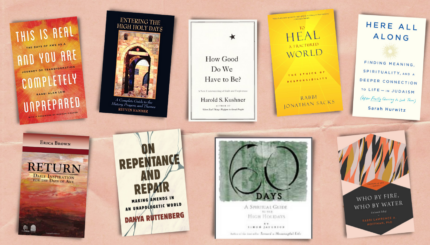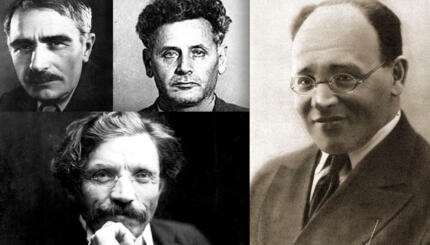I have the dubious distinction of writing an early study of Philip Roth’s fiction better known for its dedication than for its content: “To my mother, who hoped I would write about somebody else.”
Why, my mother kvetched, couldn’t I write about Leon Uris’s Exodus (1958), a story that made Jews proud rather than ashamed? “Let’s face it,” she said, “Roth’s a no-goodnik, and if you play with a bum, that’s what you’ll become.”
The Early Stories
Philip Roth was born in Newark, New Jersey on March 19, 1933 to Bess Finkel Roth and Herman Roth, a man Roth once described as “a cross between Captain Ahab and Willy Loman.” Roth’s Newark childhood is one of his great inspirations, and he depicts it in full in the non-fiction The Facts (1988). In another memoir, Patrimony (1991), Roth describes his relationship with his combative father, then suffering the ravages of cancer.
But Philip Roth is, of course, best known for his fiction. In l959, he published Goodbye, Columbus, and Five Short Stories. Not only did the 26-year-old Roth walk off with the National Book Award for his efforts, he also set in motion debates about tradition, responsibility, and the individual artist that would dog his heels from then on–book after book, decade after decade.


Help us keep Jewish knowledge accessible to millions of people around the world.
Your donation to My Jewish Learning fuels endless journeys of Jewish discovery. With your help, My Jewish Learning can continue to provide nonstop opportunities for learning, connection and growth.
Many American Jews were not pleased to see what Roth’s satiric eye and deadly accurate ear could dig up about, well, them. Goodbye, Columbus put their manners and mores on public display, and while they may have denied the accuracy of Roth’s observations, they also winced whenever his stories edged too close to the truth.
What Goodbye, Columbus laid bare was the empty triumphs of contemporary Jewish-American life. He wrote, in short, about the Jewish-American suburbs in a way that boosters equated with prophetic scolding and knockers worried would precipitate anti-Semitic riots. Hindsight suggests that both groups were wrong: Roth’s collection occasioned neither an abrupt shift in mainstream Jewish-American attitudes nor broken noses suffered from Gentile fists. What did change, however, was a revised–and revitalized–sense of the subjects to which Jewish-Americans writers could lay claim.
Roth’s early stories were generally regarded as stunners, but in retrospect, many now seem both formulaic and cold. Why? Because they, like Goodbye, Columbus, were the work of a very young man who enjoyed far more than he should have, reducing his characters to objects of easy derision.
A Jewish Writer?
Roth’s characters, like Roth himself, often seem cut off from the wellsprings of Jewish identity. They know just a little Yiddish (almost exclusively vulgarisms) and even less Hebrew; they are, for the most part, thoroughly assimilated Americans who could thoroughly explain baseball’s infield fly rule but not a single page of Talmud.
Roth insists that he is an American writer, period (in much the same ways that Bernard Malamud and Saul Bellow did before him), but when early in his career he wrote a novel (When She Was Good, 1963) populated exclusively by non-Jews, it was a non-starter.
For good or ill, Roth needs Jews and kosher-style Jewish material to get his juices flowing.
What Portnoy Wrought
Though laughter-through-tears was the hallmark of Yiddish humor, many in the Jewish community were disgusted with the laughter and unmoved by the tears of Roth’s most famous and infamous character, Alexander Portnoy.
Portnoy’s Complaint (l969) is Alexander’s unrelenting monologue, delivered to his therapist, about his sexual appetites and adventures. Portnoy wants, above all else, “to be bad and still feel good.”
The late Irving Howe, a distinguished literary critic, once accused Roth of coming from a “thin personal culture,” and it is true that Roth peppers Portnoy’s Complaint with the more immediate–and for him, more accessible–material of popular culture. This was not only ethnic foodstuffs from the Portnoy dinner table and baseball games in the street but also the sexual boasts-cum-shameless confessions that were becoming the anthem of the morally liberated l960s.
Nathan Zuckerman
Nathan Zuckerman has been an abiding presence in Roth’s pantheon since he first sought out the writer E.I. Lonoff (loosely modeled on Bernard Malamud) for aid, comfort, and most of all, artistic approval in The Ghost Writer (1979).
Zuckerman, like Roth and the fictional Lonoff, is a writer, and his novel Carnovsky–a book meant to remind us of the dust that Portnoy’s Complaint kicked up–made him rich, famous, and reviled.
The next round of Zuckerman novels–Zuckerman Unbound (1981), The Anatomy Lesson (1983), and The Prague Orgy (1985)–were consumed with proving that the author of Carnovsky was a man more sinned against than sinning.
Postmodern Experimentation
To a large extent, this whining didn’t work, and it was only when Roth became a postmodernist storyteller that his full powers were unleashed. Roth became as playfully serious as he was seriously playful.
His work took a meta-fictional turn, often with mixed results. The Counterlife (1986), in which a character dies in one chapter only to reappear several chapters later, was brilliant; Deception (1990), by contrast, was all smoke-and-mirrors. Moreover, the “Judea” section of The Counterlife and the narrative twists-and-turns of Operation Shylock (1993) remain among the most insightful treatments of Middle Eastern turmoil.
After his long absorption with Nathan Zuckerman’s complaining, Roth wrote two extraordinary novels which feature Zuckerman, but don’t focus on him: American Pastoral (1997) and The Human Stain (2000), the first about a “good man” brought down by the chaos of the 1960s and his radical daughter; and the latter about a black man who tries to pass as a white professor.
The Roth canon, now numbering 28 volumes, also includes The Breast (1972), The Professor of Desire (1977), and The Dying Animal (2001)–slim studies of a comparative literature professor named David Kepesh. It also comprises novels centering on a fictional Philip Roth–Operation Shylock and The Plot Against America (2004)–and a loose grouping of other books, including the National Books Award-winning Sabbath’s Theater (1993).
Exit Zuckerman
The (supposedly) final Zuckerman novel, Exit Ghost (2007), chronicles the narrator’s return to New York City after a long absence in the Berkshires. He is suffering from the ravages of prostrate cancer and has come to the city for treatments that might relieve his incontinence.
Haunted by ghosts from The Ghost Writer, including an ambitious young biographer who hopes to bring the long-forgotten E.I. Lonoff back to his rightful place in the literary pantheon and Amy Bellette, the mysterious young woman Zuckerman once imagined was Anne Frank and who is now in the last stages of brain cancer, Zuckerman takes the full measure of a culture he has long ignored, as death rattles surround him.
What It’s All About
In Exit Ghost, Lonoff’s would-be biographer thinks he has the “secret” that will explain the writer’s short stories and why he could never finish his long-awaited novel–and not surprisingly, that secret is incest. This was true for the other famous Roth, Henry, but not for Lonoff.
No matter. What biographers need is a juicy story that will deflect attention away from the work and onto the person at the writing desk. This is why Roth makes a point of including in Exist Ghost a letter to the New York Times, presumably written by Ms. Bellette but actually penned by none other than Lonoff himself, that explains better than anything else what Roth’s fiction has been about.
“There was a time when intelligent people used literature to think. That time is coming to an end…The way in which serious fiction eludes paraphrase and description–and hence requiring thought–is a nuisance to your cultural journalist.”
In ruminating about the long-dead Lonoff and the intellectually lazy biographer out to make a splash, Roth is no doubt thinking about himself and the biographer who will tick off his scandalous pronouncements, bad marriages, and disaffection with Judaism, and in the process ignore the nearly 30 books that changed the landscape of American literature in ways that make all of us, Jew and non Jew alike, richer, fuller human beings.


